by Margot Locker
At least until the spring of 2010, two lines of work have been particularly seductive for ‘the best and the brightest’—the graduates of our leading colleges and universities. One professional option has entailed work at the cutting edge of the technology sector—for Facebook, Apple or Google. Complementing Silicon Valley, the other option has been to work on “The Street”—in investment banking, hedge funds, or some other branch of the financial industry.
One attraction, of course, is the possibility of making a lot of money, preferably soon. While the salaries may not be exorbitant, the possibilities of options, bonuses, or “striking it rich” are patent: many young adults dream about becoming the next Marc Zuckerberg, founder of Facebook, or the next John Paulson, the trader who made billions shorting the mortgage market (technically, collateralized debt obligations).
How does one think about these career choices with respect to the execution of GoodWork™? As defined by my colleagues and me, the good worker embodies three qualities. He/she is technically Excellent: knows what to do and how to do it in the sector under consideration. The good worker is Ethical: thinks about what is the right thing to do, not just for oneself and now, but for the broader society and in the long run. Finally, the good worker is Engaged: likes the work, looks forward to it, finds meaning in it.
While I don’t have expertise in either field, I will assume that those who are recruited for these sectors—Google or Goldman for short—know what they are doing. In terms of good work, they may be deemed Excellent. They are informed and thorough students; they work hard to master material; they can pass the formal or informal tests that are posed by potential employers; and, thrown into a new situation, they are able to make sense of it, ask the right questions, finish the task expeditiously and move on to the “next next thing”.
But good work does not depend exclusively on excellence. One ceases to be a good worker if the work loses interest, on the one hand, or if one cuts ethical corners, on the other. With respect to school teachers in demanding urban settings, there is the risk of burn out. While they may still be excellent and ethical, these teachers find the job demands too difficult and eventually they become disengaged. Only those who have ample collegial support systems, or very strong religious or idealistic principles, are able to remain as engaged good workers. In the case of many professionals, the desire for fame and fortune—especially Warhol-like fame and Trump-style fortune—can come to ‘trump’ ethical considerations. Every day in the press, one reads about compromised or unethical work on the part of doctors, lawyers, professors, or engineers.
Which brings me to the young persons who want to work for Google or Goldman (or perhaps both!). Whatever attracts these individuals initially, it is clear that, once hired, they have joined a very exciting enterprise. At Google, they are developing the technology and technological applications of the future, and are even granted a day a week to focus on their own projects. At Goldman, they work along side the best and the brightest to analyze business and financial opportunities and to make the ‘best bet’—the decision that will result in additional riches for the company, and for themselves.
To borrow the terminology of my colleague Mihaly Csikszentmihalyi, working opportunities within Google or Goldman are rife with the possibility of ‘flow’—that pleasurable psychic state where skills and challenges are in mesh. The problem with the state of ‘flow’ is that it is distinctly amoral: one can have flow equally in resecting a tumor, climbing a mountain, or cracking a safe. I submit that the flow opportunities at these cutting edge companies are so alluring that they risk undermining sensitivity to ethics, rendering one prone to ethical violations.
However, engagement need not occur at the expense of ethics. Until 1999, Goldman Sachs was a partnership. Partners did well, but they had an investment in the long term growth of the company and in the preservation of its excellent reputation. And so, no doubt with some exceptions, workers at Goldman Sachs behaved in an ethical manner. But once the company became public traded, and once the power began to flow to the traders, Goldman’s ethical muscle became flabby.
Google’s motto is “Do no evil”—an injunction to watch what one is doing, morally, ethically, and legally. There have been ethical lapses at Google; indeed some of the firm’s policies of advertising, and of sharing of data, have been widely criticized. Yet Google has not always taken the easy solution. Confronted with evidence that China was censoring websites and spying on the digital footprints of dissidents, Google made the difficult decision to stop working in China and to direct users to the uncensored Hong Kong site. In this instance, I would argue, Google has taken an ethical stance—one that would not necessarily have been taken by companies with a different ethos or companies with eyes glued to the next quarter’s profits.
Fifty years ago, there was a common view of American newspapers. In this view, it was too bad that the New York Times was controlled by the Sulzberger family, and the Washington Post was controlled by the Graham family. Better that these firms become publicly held companies, not subject to familial whims. In retrospect, of course, the opposite has been the case. Today, virtually the only widely respected newspapers are those that remain under family—as opposed to public traded—names. Apparently it matters whether and how your name is being used.
In this respect, there is an interesting distinction between Google and Goldman. While Google is public traded, it remains in important respects the fiefdom of founders Larry Page and Sergey Brin. Their imprimatur remains strong. In contrast, Goldman is no longer under the directorship of individuals who are integrally connected to the past and the conscience of the company. CEO Lloyd Blankfein may be sincere in believing that the firm is doing “God’s work” but few would argue, any longer, that it is doing good work.





